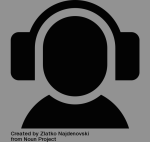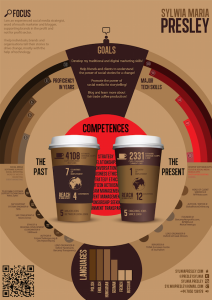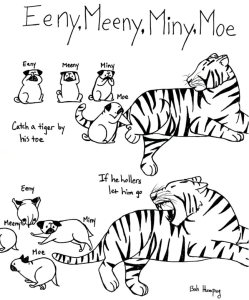My current digital writing graduate students are currently embarking on an audio project. They are all experimenting with various genres and exploring a range of topics. They will no doubt become outstanding pieces of digital writing.
My last year’s digital writing students composed such amazing audio projects that I couldn’t let the world not engage with them! I offered them the opportunity to compose a collaborative webtext for the discipline’s leading multimedia journal, Kairos: A Journal of Rhetoric, Technology, and Pedagogy. They were very in to the idea, and we spent a significant amount of time working on it after the course ended. I’m so happy to say that our article “Navigating the Soundscape, Composing with Audio,” will be published in the praxis section of Kairos in August.
I feel a significant amount of pressure (totally self-induced) to offer a similar opportunity to this year’s digital writing crew not only because their projects are sure to rock (their first projects blew me away), but situating them within a publication also renders an authentic writing experience. It takes student-composers’ work out of school-based, faux-like genres and into extracurricular genres with real-life rhetorical situations wherein they are positioned as composers (not student-composers). An authentic writing experience is infinitely better to teach the rhetorical nature of writing, the idea that writing matters (matters to writers, but also to others and to the public) and is meaningful (to the self and to others).
With that said, I’m dedicating this post to venues where students may think of trying to publish their work.
The Drum: A Literary Magazine for Your Ears
The magazine “publishes short fiction, essays, poetry, novel excerpts, and interviews exclusively in audio form. Works are organized not only genre but also by theme and length. The themes include: comedy, crisis, family, and relationships. Works can be small (under 10 minutes), medium (under 20 minutes), large (under 30 minutes) and extra large (max 40 minutes). Here are submission guidelines.
The Missouri Review
The journal identifies itself as the “most highly-regarded literary magazines in the Univted States.” It has a yearly “Miller Audio Prize” where audio works in humor, prose, poetry and documentary are considered for a prize. The deadline just passed for this year, but next year is always a possibility.
Snap Judgement
They publish radio stories. Here are some helpful guidelines for thinking about composing in this genre and submitting work.
Studio 360
This radio show is “public radio’s smart, fun, and provocative window on pop culture and the arts. Listen to surprising conversations, performances, and stories from across the spectrum of art and culture. Share your stories or your show ideas with us by sending an email or a recorded voice memo to studio360@wnyc.org.”
The below journals call for composing and writing about audio projects.
Copper: Journal of Music and Sound
Copper “is a magazine about music: the sound of it, the feel of it, the emotion of it and the people who create it.” It publishes work by “musicians engineers, philosophers, audio designers, historians and people who love music both live and recorded. Although these articles seemingly have little sound included, I imagine it must be an option.
Enculturation: A Journal of Rhetoric, Writing, and Culture
This journal is a “refereed journal devoted to contemporary theories of rhetoric, writing and culture” that invites multimedia projects. Here are the submission guidelines.
Kairos: A Journal of Rhetoric, Technology, and Pedagogy
This journal is a “refereed open-access online journal exploring the intersections of rhetoric, technology, and pedagogy.” They publish “”webtexts,” which are texts authored specifically for publication on the World Wide Web.” Here are submission guidelines.
Itineration: Cross-Disciplinary Studies in Rhetoric, Media, and Culture
This journal is “an international, refereed publication devoted to mapping the intersections of rhetoric, media, and culture. They publish multimedia texts and are “interested in projects that push the boundaries in their composition and presentation.” Here are submission guidelines.
Harlot: A Revealing Look at the Arts of Persuasion
This “is an interactive digital magazine dedicated to exploring rhetoric in everyday life. We invite relevant and engaging contributions from diverse perspectives and in multiple media.” Here are submission guidelines.
AIR’s Pitch Page lists people and places that acquire work from audio freelancers.
Narratively is devoted to original and untold human stories, delivered in the most appropriate format for each piece, from writing to short documentary films, photo essays, audio stories and comics journalism. We are always interested in adding new, diverse voices to the mix and we pay for stories.
The Establishment is is looking to unearth overlooked stories, produce original reporting, and provide a platform for voices that have been marginalized by the mainstream media. And yes, we want your humor, wit, and good old-fashioned satire, too. We publish originally reported features, interviews, long-form journalism, personal essays, and multimedia of all shapes, sizes, and creeds.
Truthout is works to spark action by revealing systemic injustice and providing a platform for transformative ideas, through in-depth investigative reporting and critical analysis. With a powerful, independent voice, we will spur the revolution in consciousness and inspire the direct action that is necessary to save the planet and humanity.
Transom: We’re looking for great radio – things that are less heard, different styles, new voices, new ways of telling, and any other good pieces that haven’t found another way onto public radio.
Player FM is the multi-platform podcast app that helps you find shows on the topics you care about and play them at your convenience, even when you’re offline.
I’ll continue my hunt for more venues, and in the meantime, get in touch if you know of any not on this list!






